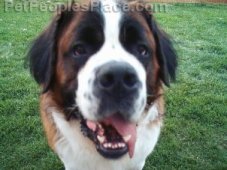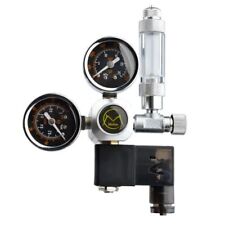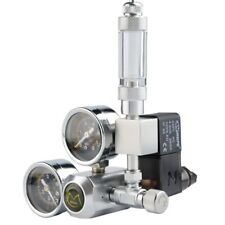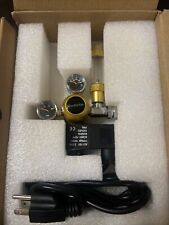Teaching an Old Dog New Tricks


Commands
If you want your dog to come when called, don’t change from ‘come here, boy,’ to ‘Jake, come!’ The same applies for all of the other commands – it will just confuse your dog. Try to keep your voice the same tone and volume, too.
Rewards
Rewarding a dog for good behavior with food can’t fail. The best kinds of treats to use are the sticks of beef or chicken that can be broken into small bits. To prevent your dog from being reliant on food rewards, make sure you remember to pat her and praise her as well. If your dog is prone to putting on weight, use low-fat treats or replace the treats with a game with a favorite toy.
Punishment and Correction
You should never need to punish a dog. A dog won’t connect your anger with the remains of the pair of expensive shoes that he chewed. If you come home to find your dog has chewed the leg of your antique dresser, ignore him. If you catch the dog whilst he’s in the midst of chewing, however, shout ‘NO’ and offer something suitable for him to do, such as a toy to chew on rather than the dresser’s leg. To save your belongings, keep them out of harm’s way – and remember that, despite popular belief, dogs do not experience guilt. If your dog does something wrong, say ‘Good dog’ and start again. Go overboard on the praise when he does something right. Above all, you should never, ever abuse or hit your dog.
Training Sessions
Have several short training sessions during the day rather than just one long one – this is particularly important for puppies, which get bored easily. Begin and end the sessions on a positive note. When your pet is learning a new command, train her indoors where there are few distractions – when she knows the basics, you can take her outside and add a few more distractions.
Obedience Classes
Even if you have been successful training your dog at home, it’s an excellent idea to enroll him in an obedience class. You’ll meet new people through these classes, which are usually run by a professional dog trainer, and your dog will learn how to behave nicely with both people and other dogs. It’s a good idea to visit the trainer and watch a session before signing up – make sure you approve of the techniques the trainer employs. If you don’t feel comfortable with the trainer, or if he/she encourages punishment or old-fashioned methods that don’t work, look elsewhere for a better trainer.
Come
Come is one of the most important commands to teach. Encourage your dog to come towards you with a toy, a treat or just your voice and body language. Say, ‘Kelly, come,’ as your dog comes towards you, and praise her as soon as she arrives. Hold for collar for thirty seconds, and then let her go. When your dog is deaf to your calls, you lean over, slap your thighs and yell ‘Come!’ However, this technique doesn’t work. Patricia B. McConnel, Ph.D., an animal behaviorist and author of ‘The Other End of the Leash’, says it’s a better idea to walk away from the dog, clapping your hands and using your voice to entice your dog to follow.
Sit
There are several ways to train a dog to sit, and these are the two most popular methods. Put your hand of your dog’s rump, press down gently, and say ‘Sit’. Whilst this is often successful, you might want to try the second technique, as some dogs won’t sit unless they feel your hand. This requires you to hold a treat above the dog’s head so that he needs to crane his neck to see it. It relies on a theory that dogs sit down whenever they want to look upwards. Say ‘Sam, sit,’ just as your dog is bending his legs.
Down
Put your dog in a sit, and then pick up both of her legs and slide them down until her elbows are on the ground. As you do this, say ‘Ruby, down.’ Keep her in position for about thirty seconds, and then let her go and praise her enthusiastically.
Stay
Every dog should know how to stay. Command your dog to sit or lie down, then take a step away from him, saying ‘Theo, stay.’ Hold your hand, palm towards the dog, up. If the dog leaves his position, shout ‘No’ and return the dog to his original spot. When he obeys, say ‘Finished’, ‘OK’ or something similar in an excited tone, and beckon the dog towards you. (This will be your ‘release command’, which you use whenever you want to tell the dog you’ve finished an exercise and that he can move now.) Praise him and tell him that he’s the best dog in the world.

Heel
Does your dog take you for a walk? A lot of dogs pull on the lead – in fact, it is one of the most common of the undesirable behaviors dogs are wont to develop. Heel is a hard command to teach an adult dog, as she may have already learnt to pull to get from A to B faster. As soon as the leash goes taut, turn back towards your house without a word. Repeat this until your dog learns that the walk ends when she pulls on the leash. If this doesn’t work, consider purchasing a special kind of harness, such as a Gentle Leader, that controls lead-pulling.
Most of the time, teaching a puppy how to walk at heel is quite simple. If you start training as soon as you bring your pup home, walking your dog should be a breeze. At first, keep your pup off the leash – hold a treat by your ankle, start walking at a regular pace, and encourage her to follow. Give her the treat once you have walked a small distance.

Repeat this until she’s good at keeping time with you. The next step is to attach the lead, but don’t take her for a walk outside your home and yard. All dogs get excited – and therefore are much more likely to pull on the lead – when they’re being taken for a walk. If she doesn’t behave as well when on a lead, try the exercise recommended above for adult dogs. Don’t forget to praise at regular intervals when she performs well.
Whether you’re teaching a new dog old tricks, or an old dog new ones, with persistence, patience and lots of dog treats you should have an obedient companion in no time.













